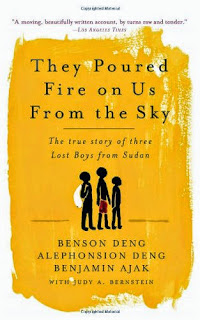 This cartoon depicts the irony of the panic due to the Ebola scare. It shows a man who represents the USA, and shows all the things that are more harmful while they are stressing out about Ebola coming to America. He is over weight and holding fast food, the cartoon then shows a statistic of how much obesity kills a year. He is also shown smoking, and a statistic is provided with the deaths due to tobacco. Finally, he is shown drinking, and a statistic is shown for that as well.
This cartoon depicts the irony of the panic due to the Ebola scare. It shows a man who represents the USA, and shows all the things that are more harmful while they are stressing out about Ebola coming to America. He is over weight and holding fast food, the cartoon then shows a statistic of how much obesity kills a year. He is also shown smoking, and a statistic is provided with the deaths due to tobacco. Finally, he is shown drinking, and a statistic is shown for that as well. The use of statistics provided logos for the cartoon. It gives the viewers absence of where the cartoon is going and the purpose behind what is going on. It also provides an appeal to pathos in that everyone was in the position where Ebola was a concern. It introduces a sense of irony due to the idea that we are partaking in much more harmful activities, which pose more of a threat than Ebola would have. This picture is effective in getting across how irrational the Ebola craze was. It addresses how we should deal with more immediate issues than worry about a disease that hasn't even affected many people yet and will potentially not even be a threat. This cartoon is an accurate depiction of Anerican's because we tend to worry due to our lack of knowledge and don't realize the problems that are right infront of us. I feel the audience of the cartoon was all Anmricans to say that we need to be more concious of the problems that are already in America and not a bigger issue in other parts of the world.













